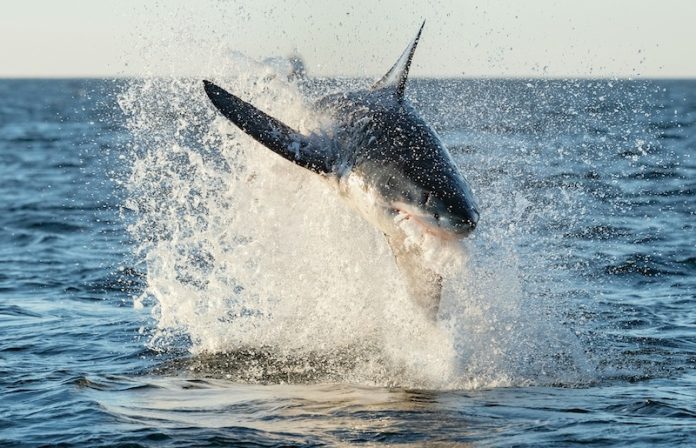
Imagine seeing something that nobody has ever seen before. This is exactly what happened to wildlife filmmaker Carlos Gauna and Phillip Sternes, a biology student from UC Riverside.
On July 9, 2023, they were out on the ocean near Santa Barbara, California, looking for sharks. What they found was truly remarkable.
Using a drone, they spotted a very small shark. But this wasn’t just any shark. It was a baby great white shark, and it was completely white.
Great white sharks, usually gray on top and white on the bottom, are known as the largest predatory sharks. They are also known for their attacks on humans, which makes the sight of a baby great white even more extraordinary.
Sternes explained that the white color they saw was a layer being shed from the shark’s body as it swam. He believed it was a newborn shedding its embryonic layer.
This observation was so unique that they wrote a paper about it in the “Environmental Biology of Fishes” journal.
The discovery of a live newborn great white shark is significant. Gauna, also known online as The Malibu Artist, has spent a lot of time filming sharks.
His videos are popular, getting millions of views. But neither he nor anyone else had ever seen a baby great white shark alive in the wild.
This sighting might help solve a big mystery about where great white sharks give birth. Scientists have long wondered about this, as no one had seen a newborn or knew where they were born.
The only evidence of baby great whites before this was from dead sharks found inside their mothers.
Though the researchers considered that the white layer might have been a skin condition, they didn’t think this was likely. If it was a skin condition, it would be the first time it’s been seen in these sharks.
There are several reasons why they believe they saw a newborn great white. First, these sharks give birth to live pups, which feed on a special ‘milk’ in the womb. Sternes thinks what they saw was the baby shedding this milk.
Second, the area where they saw the baby shark is known to have large, likely pregnant, great whites. Gauna had seen them there before. On the day they found the baby shark, he had filmed three large sharks that looked pregnant.
Third, the size and shape of the shark were just right for a newborn. It was thin, short, and rounded, likely only a day old.
Finally, the location off the coast of central California has been thought of as a possible birthing place for great whites. If this is true, it’s a big deal because most people thought great whites were born far out at sea.
This baby shark was found only about 1,000 feet from the beach. This suggests it was born in shallow waters, which is new information about great white sharks.
These sharks are an endangered species, so this discovery is crucial. If this area is confirmed as a breeding ground, it could lead to protection of these waters to help great whites thrive.
The research findings can be found in Environmental Biology of Fishes.
Copyright © 2024 Knowridge Science Report. All rights reserved.



